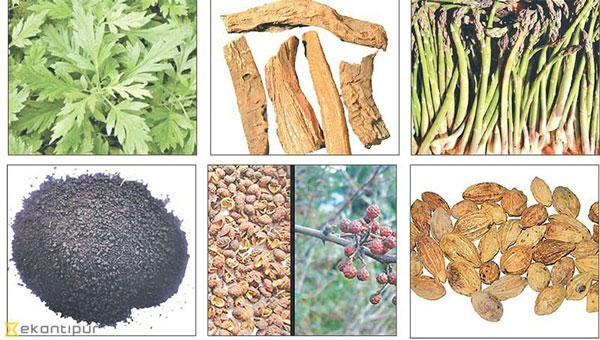Dr. Sarfraz Ahmed
Medicinal plants have an important value in the socio-cultural, spiritual and medicinal use in rural and tribal lives of the developing countries. Medicinal and aromatic plants can be defined as plants used in official and traditional medicine, aroma and flavor. The demand of medicinal and aromatic plants is increasing both in developed and developing countries. Most of the raw materials of medicinal plants are collected from forests and rangelands and few medicinal plants are cultivated. Deforestation, over-exploitation, overgrazing, and conversion of natural habitats to agricultural fields resulted scarcity of medicinal plants. About 6000 plant species have been reported in Pakistan and among these about 3200 species have medicinal uses in Unani, allopathic, and homeopathic medicines and 300 species are used in traditional medicines. However, the cultivation potential of few species is exploited and 90% of the country’s medicinal herb requirement is imported.
Trade in medicinal herbs is growing in volume and in exports. It is estimated that the global trade in medicinal herbs is US$800 million per year. China exports over 120,000 tones and India 32,000 tones per annum and dominates the International markets. It is estimated that the import of medicinal herbs in Pakistan is more than US$ 31.0 million whereas export value of medicinal herb is only $6.0 million. This indicates a huge imbalance and demand of medicinal herbs in the country. The medicinal and aromatic plants may not be the alternative to major crops but due to importance in health care, natural resource and economic value, efforts are needed to boots the production in Pakistan by observing the WHO guidelines of (GACP) good agricultural, collection and processing practices.
Balochistan is also a native home of many medicinal plants. In Balochistan, various medicinal plants are being collected and sold in the local market. However, very limited knowledge is available on the multi-purpose herbs which can be cultivated and utilized for different purposes.
The International Trade Centre identified best known and widely traded hers are Basil, Bay, Dill, Marjoram, Mint, Oregano, Parsley, Sage, Savory, Tarragon, and Thyme. Ecological conditions play a major role in the cultivation of medicinal and aromatic plants and active ingredients. PARC-Balochistan Agricultural Research and Development Centre, Quetta is carrying out the research and development activities on medicinal and aromatic plants to identify the best multi-purpose species for commercial scale production and marketing. Successful experiments have been carried out on various species and results are very encouraging. However, better market opportunities are required for farmers to fetch a better price on their produce. At present there is a huge differences in buying and selling prices of the medicinal and aromatic plants.
Medicinal and aromatic plant garden of various native and exotic species have established at the Centre for research, demonstration and seed production. The available germplasm can be classified into four main groups: culinary herbs, medicinal herbs, perfumery herbs, and herbal teas.
Germplasm of (Cuminum cyminum, Nigella stavia, Foeniculum vulgare) was evaluated for various growth parameters and yield potential in Balochistan. Based on adaptability and yield potential all these medicinal plants can be grown both highlands and plains areas of Balochistan. Results indicate that these crops are required less water as compared with other irrigated crops. Cumin is a rainfed crop with short duration and high market demand. Market prices of cumin are relatively higher and farmers can fetch a reasonable amount if they produce quality cumin. In rainfed condition the seed yield of cumin ranged from 500-600 kg/ha. The Fennel seed yield ranged from 1500 to 2000 kg/ha and the Kalonji seed yield ranged from 800 to 1000 kg/ha.
Thyme, Oregano, Rosemary, Marjoram, Tarragon are some of the common perennial culinary herbs in the world and also available in various markets of Pakistan. Production potential of these herbs was evaluated in various trials and results are very encouraging. These herbs can successfully be grown in highlands of Balochistan. Two to three cuttings of leaves can be obtained before the start of winter season.
BARDC, Quetta has launched the marketing of culinary herbs like Rosemary, Thyme, German Chamomile and Oregano with the collaboration of PATCO, PARC. However, there is a further need to identify the big market avenues with proper production, packaging and labeling.
The benefits of herbal teas have long been recognized for rest and relaxation. Herbs can be used as tea alone or in combination with other herbs and condiments. English Thyme and German Chamomile are the two most common herbal teas in many parts of the world. The benefits of Chamomile tea include boosting the immune system, relaxing the nerves, soothing the upset stomach. Thyme tea can be used as a mouthwash to treat sore throat or infected gums, helps ease headaches, colds, flu and whooping cough. German chamomile has shown excellent production potential in AZRCs trials. The fresh flower production of German Chamomile under rainfed conditions (200 mm) was recorded 1500 kg/ha with 10 days flower picking intervals. In irrigated conditions the fresh flower production ranged from 4000-6000 kg/ha.
Essential oils of herbs can be used in different ways. The most common uses of essential oils are for making natural perfumes and for aromatherapy. The best herbs identified for essential oil are: English Lavender, Mint, Sage, Marjoram, Lemongrass, Rosemary. Determination of essential oil by Steam distillation process was carried out for some of the aromatic herbs and results are encouraging that these herbs can be grown for the extraction of essential oils.
The potential medicinal herbs identified for usage both in Unani and Homeopathic medicines are Thyme, French Lavender, Hyssop, German Chamomile, Marjoram, Anise, Chicory, Yarrow, Rosemary, Lemon Balm, Milk thistle, Comfrey, and Oregano. The quality of raw products and selection of right species are the two major constraints for production of quality herbal medicines. All these medicinal plants can successfully be grown in Balochistan.
—The writer is Member of (Natural Resources), Pakistan Agriculture Research Council, Islamabad.










